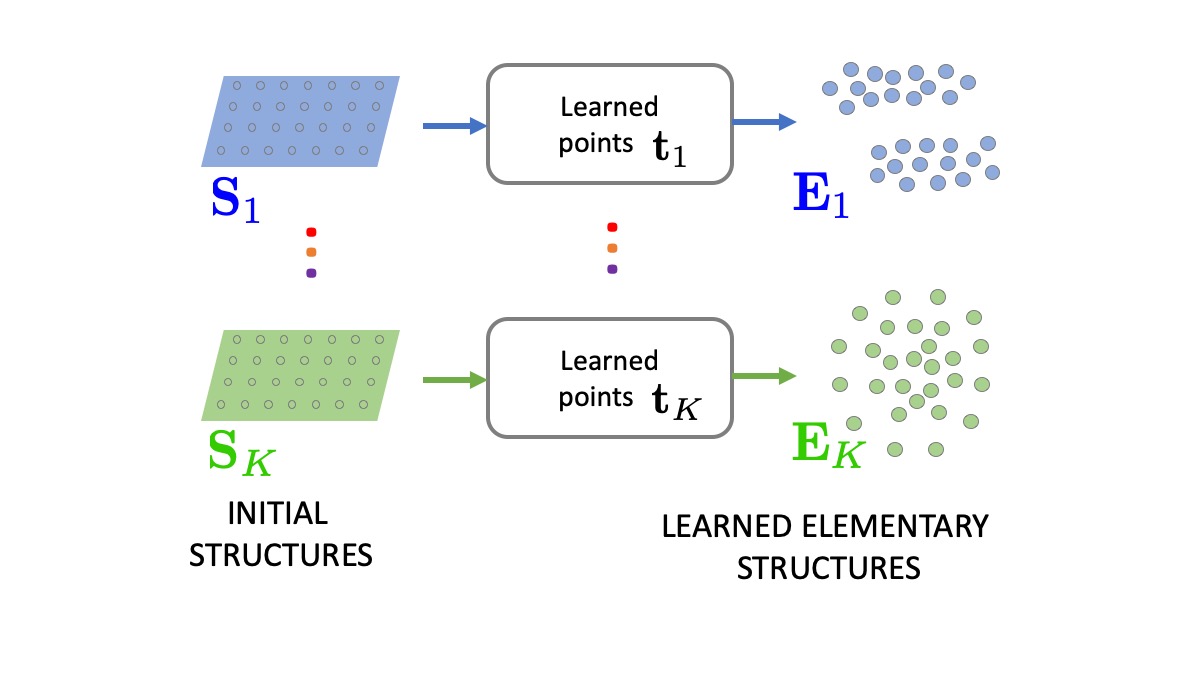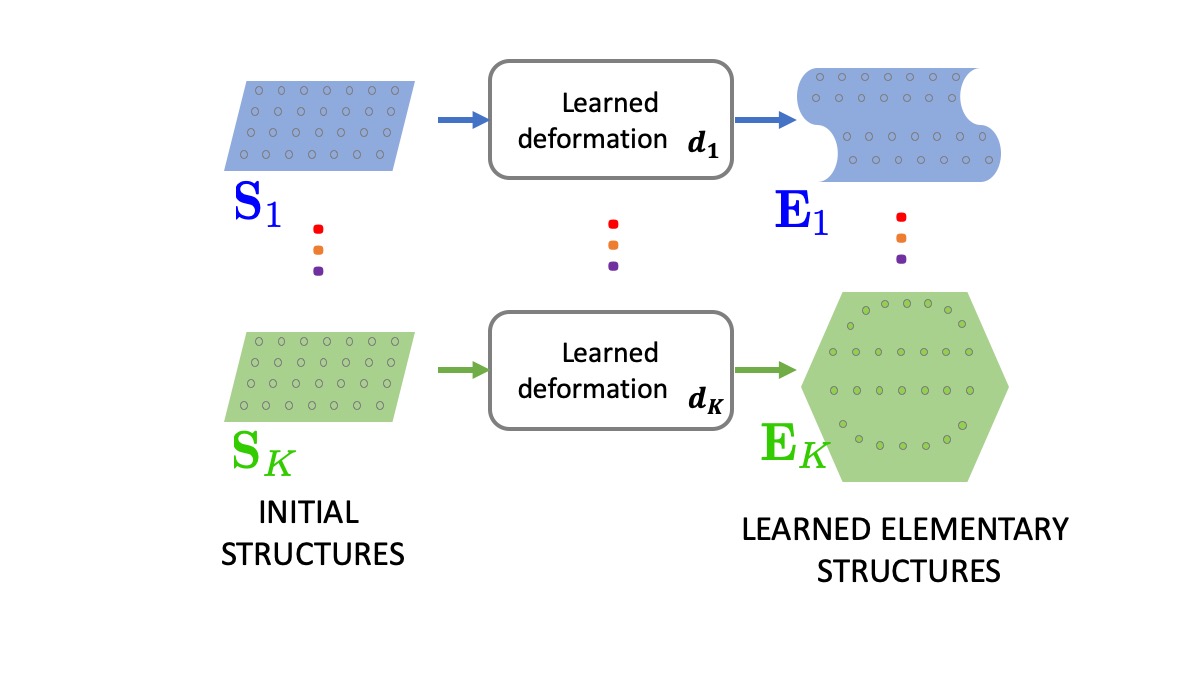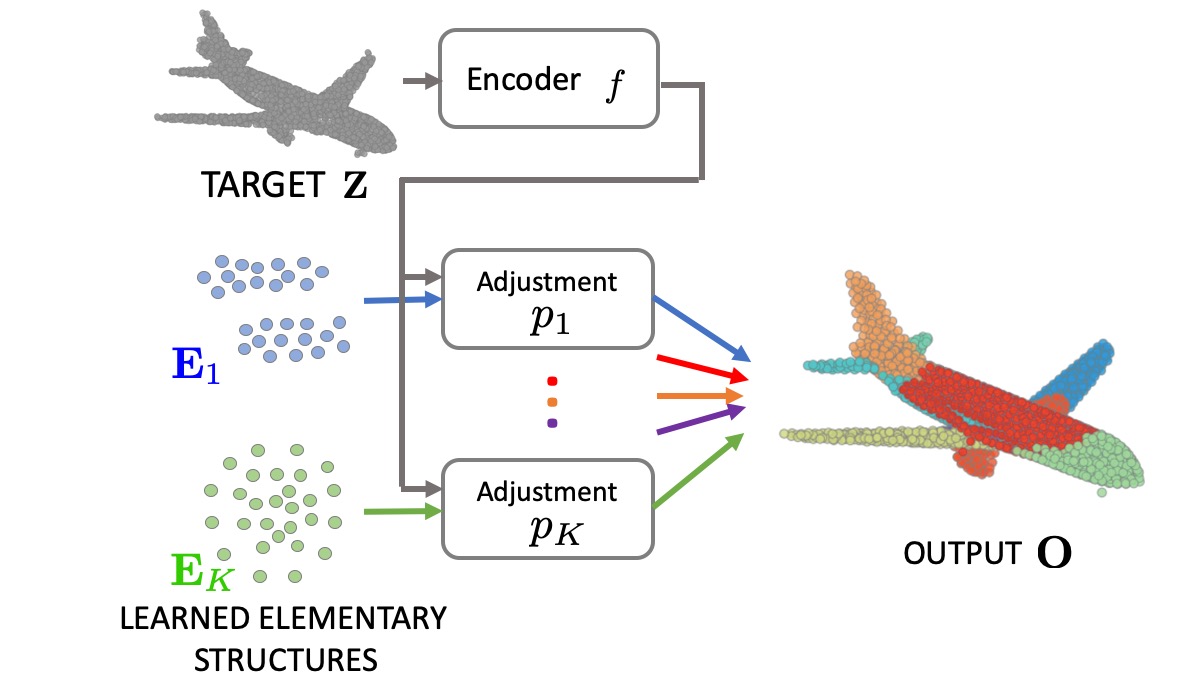AtlasNet V2 - Learning Elementary Structures
 Problem statement. We seek to automatically learn a set of primitives (called "learned elementary structures") for shape reconstruction and matching
Problem statement. We seek to automatically learn a set of primitives (called "learned elementary structures") for shape reconstruction and matching
 Problem statement. We seek to automatically learn a set of primitives (called "learned elementary structures") for shape reconstruction and matching
Problem statement. We seek to automatically learn a set of primitives (called "learned elementary structures") for shape reconstruction and matching
We propose to represent shapes as the deformation and combination of learnable elementary 3D structures, which are primitives resulting from training over a collection of shape. We demonstrate that the learned elementary 3D structureslead to clear improvements in 3D shape generation and matching. More precisely, we present two complementary approaches for learning elementary structures: (i) patch deformation learning and (ii) point translation learning. Both approaches canbe extended to abstract structures of higher dimensions for improved results. We evaluate our method on two tasks: reconstructing ShapeNet objects and estimatingdense correspondences between human scans (FAUST inter challenge). We show 16% improvement over surface deformation approaches for shape reconstructionand outperform FAUST inter challenge state of the art by 6%.
If you find this work useful in your research, please consider citing :
@article{deprelle2019learning,
title={Learning elementary structures for 3D shape generation and matching},
author={Deprelle, Theo and Groueix, Thibault and Fisher, Matthew and Kim, Vladimir G and Russell, Bryan C and Aubry, Mathieu},
journal={arXiv preprint arXiv:1908.04725},
year={2019}
}Current surface-parametric approaches for generating a surface or aligning two surfaces rely on alignment of one or more hand-chosen parametric shape to a target shape. In this paper, we ask - "what is the right set of primitives to represent a collection of diverse shapes?" To address this question, we seek to go beyond manually choosing shape primitives and automatically learn what we call "learnable elementary structures" from a shape collection, which can be used for shape reconstruction and matching. The ability to automatically learn elementary structures allows the shape generator to find a better set of primitives for a shape collection and target task.
| (a) Points translation learning | (b) Patch deformationlearning | (b) Elementary structures combination |
 |
 |
 |
We provide source codes for the project on http://github.com/TheoDEPRELLE/AtlasNetV2.
We used ShapeNet 3D models, and rendered views from 3D-R2N2, available below.